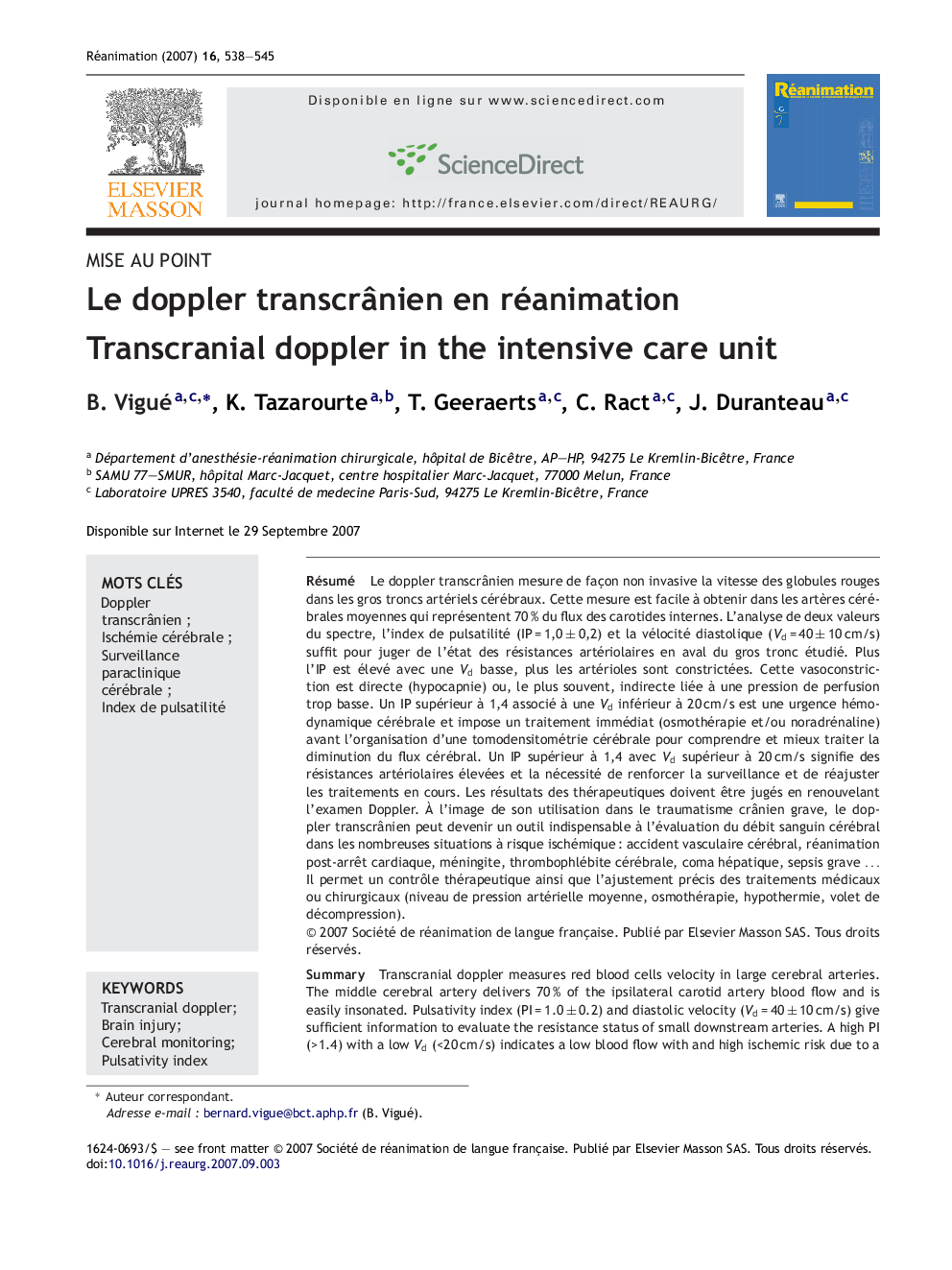| Article ID | Journal | Published Year | Pages | File Type |
|---|---|---|---|---|
| 2612280 | Réanimation | 2007 | 8 Pages |
Abstract
Transcranial doppler measures red blood cells velocity in large cerebral arteries. The middle cerebral artery delivers 70 % of the ipsilateral carotid artery blood flow and is easily insonated. Pulsativity index (PI = 1.0 ± 0.2) and diastolic velocity (Vd = 40 ± 10 cm/s) give sufficient information to evaluate the resistance status of small downstream arteries. A high PI (>1.4) with a low Vd (<20 cm/s) indicates a low blood flow with and high ischemic risk due to a low cerebral perfusion pressure. In this case, treatments (osmotherapy and/or norepinephrine) are indicated before CT scan. A high PI associated with Vd greater than 20 cm/s indicates high cerebral arteriolar resistances (vasoconstriction or low CPP) and the necessity to improve monitoring and cerebral hemodynamic status. Like in head trauma management, transcranial doppler can be performed in other several situations with high cerebral ischemic risk including stroke, postcardiac arrest period, meningitis, hepatic coma or sepsis ⦠Moreover, it allows therapeutics adaptation and may help medical or surgical decisions.
Keywords
Related Topics
Health Sciences
Medicine and Dentistry
Emergency Medicine
Authors
B. Vigué, K. Tazarourte, T. Geeraerts, C. Ract, J. Duranteau,
